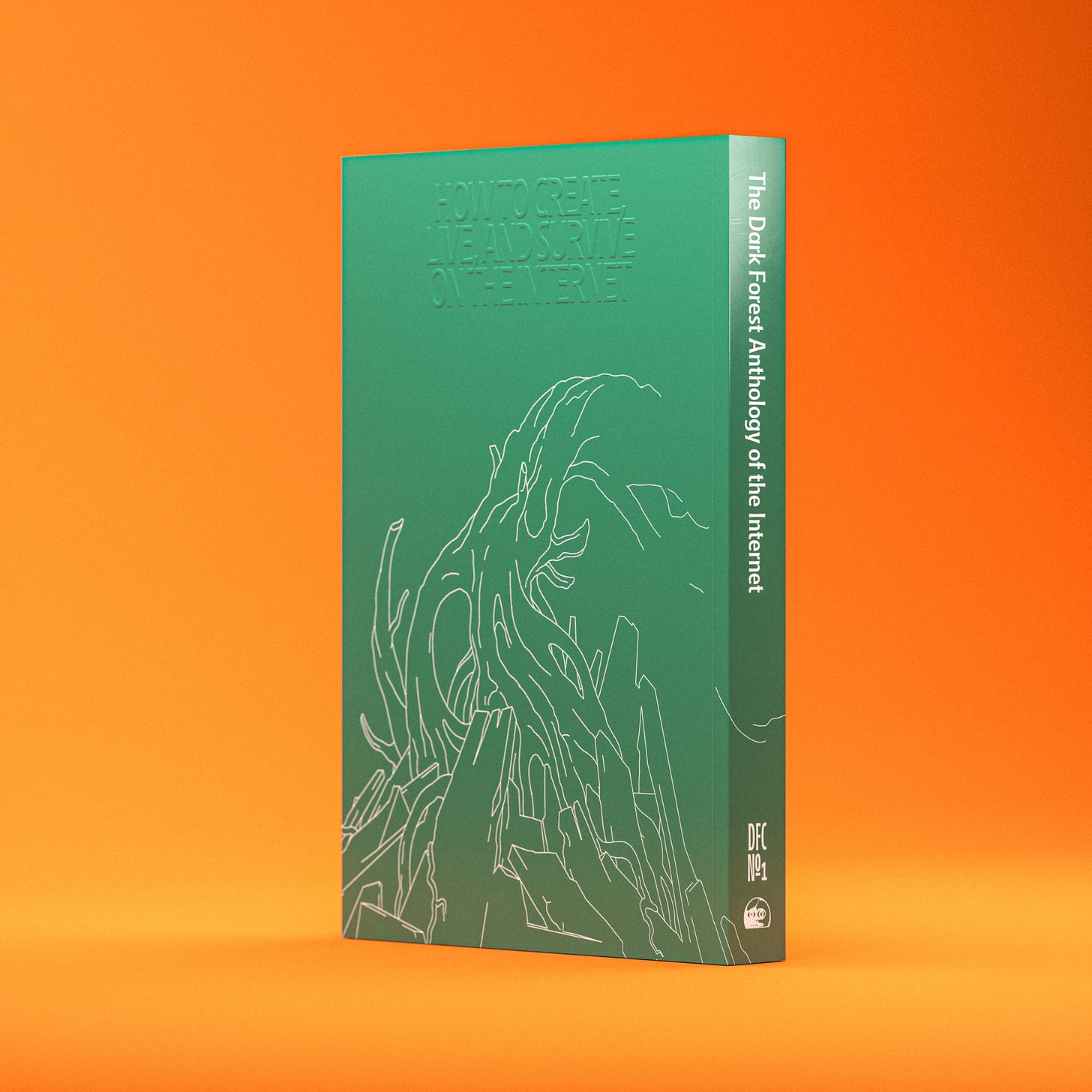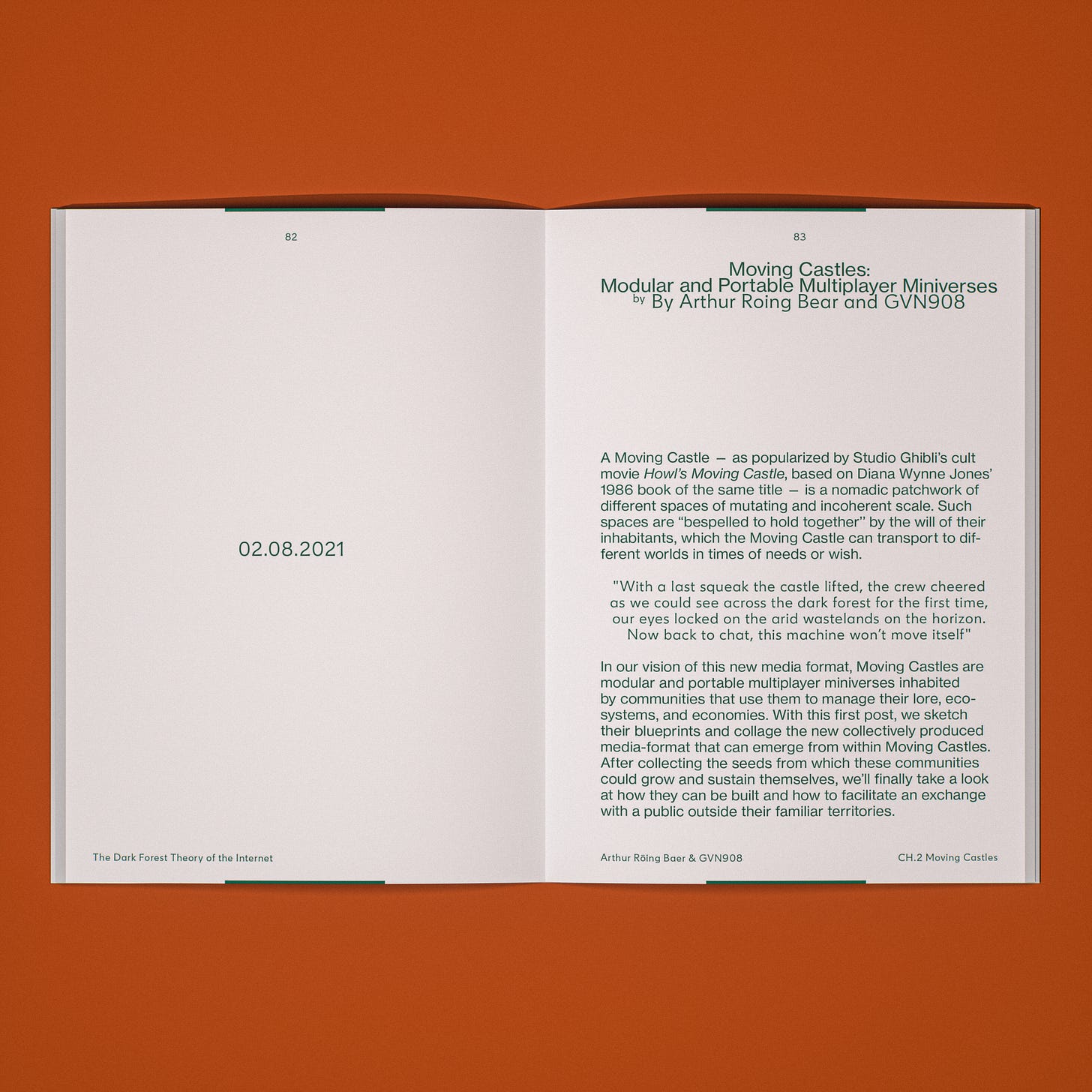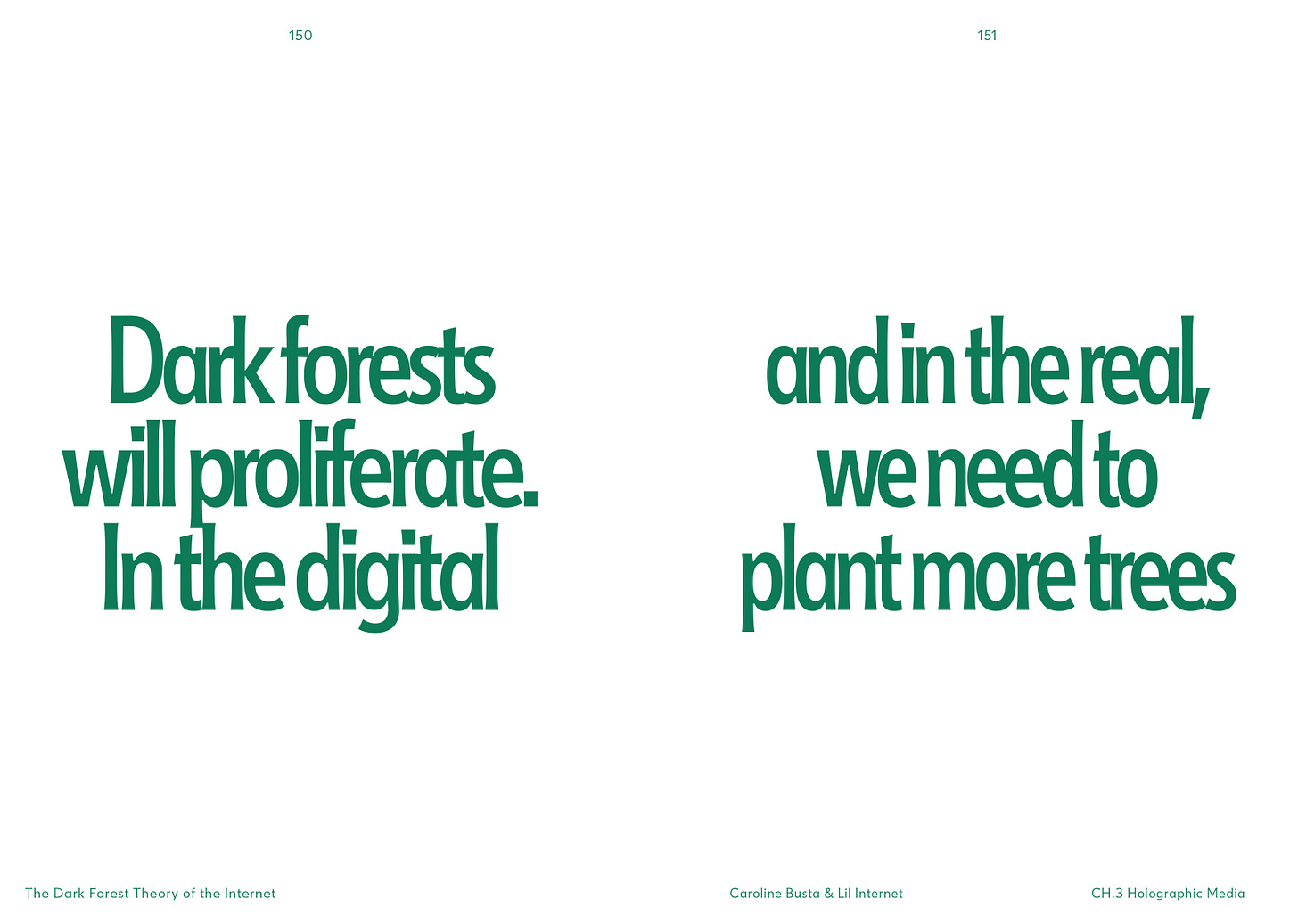If you’ve managed to find your way here, you are likely familiar with the Dark Forest Theory of the Internet. You may not yet know it by name but you know it by vibe. Dark Forests are online gathering spaces that are non-indexed, non-optimized and hidden from public view. They are typically hosted in Discords, Telegram, WhatsApp Groups, and other private channels where conversations feel private and contextually safe.
A few years ago, big social media platforms (aka the Clear Net) began to erode under the toxic design of the attention economy. Twitter, Meta, and others degraded into hyper-individualistic clickbait, outrage and spam. The cultural and political chaos of the era drove many of us into private discussion groups. Once inside, we could thoughtfully explore sensitive topics, fringe theories (that sometimes turned out to be real) and genuinely seek truth outside the context collapse of big platforms.
During this period, new communities and para-institutions arose. Projects like
, , Trust, The Stoa, Ribbonfarm and , each offered a compelling alternative to the atomizing structure of social media. These groups emerged independently and asynchronously. Overtime, we found each other and forged new collaborations.The Dark Forest Anthology of the Internet is a 208 page book that documents five tumultuous years when we learned how to live, create, and conspire on an increasingly adversarial internet. The anthology includes eleven pieces:
- and Rebecca Fox
We Need New Platforms to Tell New Stories by
Proof of Vibes by Leith Benkhedda
Moving Castles by Arthur Roing Bear and GNV908
The internet didn’t kill counterculture; you just won’t find it on Instagram by Caroline Busta of
The Expanding Dark Forest and Generative AI by Maggie Appleton
Holographic Media by Caroline Busta and Lil Internet of
The Post Individual by
A closing benediction by Cixin Liu
The first edition is now available on Metalabel. Book design by Leith Benkhedda.
Foreword
This book collects essays written by eleven authors asynchronously without coordination over the course of five years. The eleven of us are spread around the world — Berlin, London, New York, Seattle, Toronto. We have very different personal and professional backgrounds. But online we are more alike than different. We’re all members and leaders of online communities (including New Models, Do Not Research, Trust, Ribbonfarm, The Stoa, and Metalabel) that exemplify new forms of social institutions that have become increasingly important as the digital world has matured.
The Anthology started unknowingly in 2017 when one of us, Yancey Strickler, wrote a piece titled “The Dark Forest Theory of the Internet” that connected the author’s struggle to be themselves online with an increasing sense of threat and danger on the internet. The essay used the metaphor of the “Dark Forest”— introduced in Fermi’s Paradox and written about by the Chinese sci-fi author Cixin Liu in his Three Body Problem trilogy—to bridge those feelings.
Bringing these ideas together—an increasing reluctance to be real online, a growing need for digital safety, and the metaphor of the Dark Forest—helped articulate
a personal truth that quickly spread. The essay was initially sent to a private newsletter list of 500 people, but as happens with ideas on the internet, was widely shared and soon read by hundreds of thousands of people. As the essay spread, other writers began to engage with and build on its feelings and ideas.
Within days of that first essay, the prolific writer and thinker Venkatesh Rao wrote a prescient follow-up in his Ribbonfarm newsletter that explored the Dark Forest from new angles, introducing the concept of the “CozyWeb” to describe a more homesteading-like experience that defined a certain strata of behavior online.
A few days later, the developer and designer Maggie Appleton brought the Dark Forest and CozyWeb concepts together into a striking illustration that told a new story about the internet as not one place, but a whole topography comprised of multiple levels of safety and security. These three pieces are collected in the first section of this anthology.
In the years following, these ideas continued to travel and connect as the number of Dark Forest spaces grew. When COVID hit, these spaces went from the Very Online digital fringe to a mainstream experience at an unimaginably mass scale.
***
The overall arc of these pieces—all written over a span of five very tumultuous years online—illustrates a key evolutionary moment in the social life of the internet. This was the moment the web’s youthful exuberance and naiveté gave way to anxiety, self-protection, and a thirst for social structures that could provide safety, meaning, and context in a newly adversarial realm.
We as eleven loosely connected individuals came together to make this collection to reflect this transitory moment. To leave graffiti on humanity’s bathroom wall to say here’s what it was like to be alive then. Here’s what we felt. Here’s what we were afraid of. Here’s how we tried to collectively and individually self-manage a social revolution churning all around us.
We cannot say where this is going. We can only say where we’ve been. Welcome to the Dark Forest Anthology of the Internet.
—
Yancey Strickler, Venkatesh Rao, Maggie Appleton, Peter Limberg, Rebecca Fox, Leïth Benkhadda, Joshua Citarella, Arthur Röing Baer, GVN908, Caroline Busta, Julian Wadsworth
December, 2023
Print edition & PDF available on Metalabel.











Hi! Is there any way to order the PDF version? The physical book will not ship outside the US.
Hey! Is there a way to buy this in Europe? I would love a copy but Metalabel doesn't allow me to purchase outside of the US.